TRNP - North Unit
July 23-28 Theodore Roosevelt National Park - Watford City ND - #37 - 2023
NATURE
TJ
7/29/2023
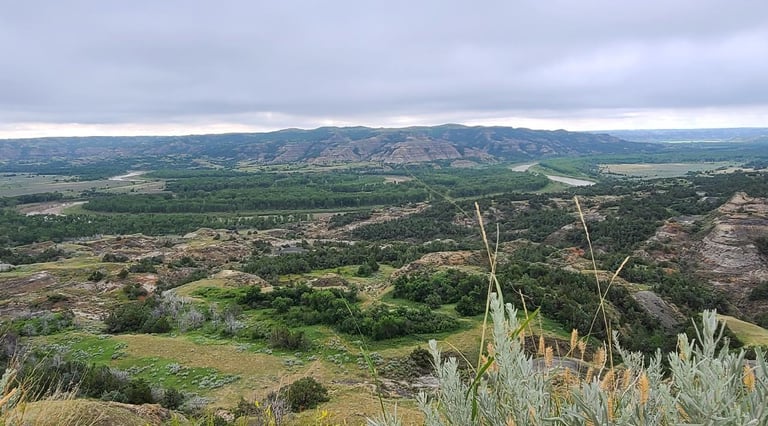

Come to Teddy Roosevelt National Park, they said... You’ll see lots of wildlife, they said... Nobody will be there, they said... They lied! At least that was my first impressions.
We went to the North Unit several times during our stay at Summit Campground. Our first visit was a cloudy Wednesday and most every parking lot was nearly full but thinned out while we were there. Maybe I smelled bad, I don’t know, but it pleased me that if I waited a few minutes there magically wouldn’t be any people in my shot! This first visit was rather busy-ish, but it was the late morning crowd like most places. The following visits were just after sunrise or shortly before sunset, and at those times there were far less humans and more critters.
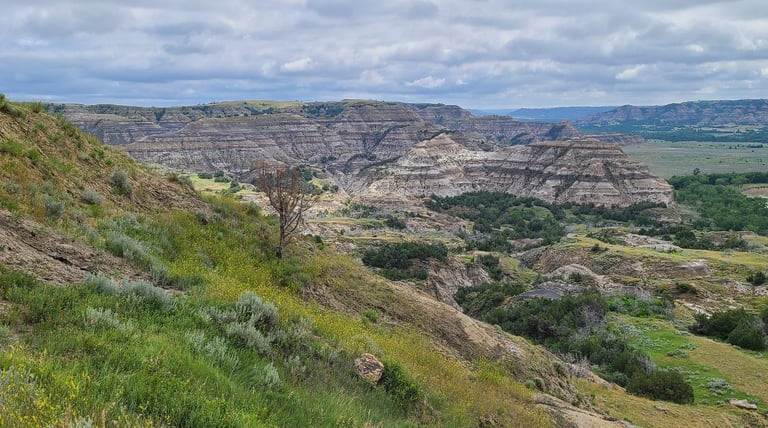

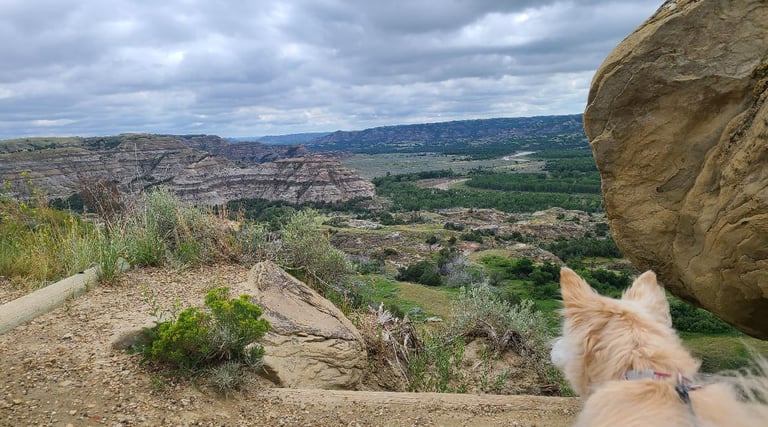

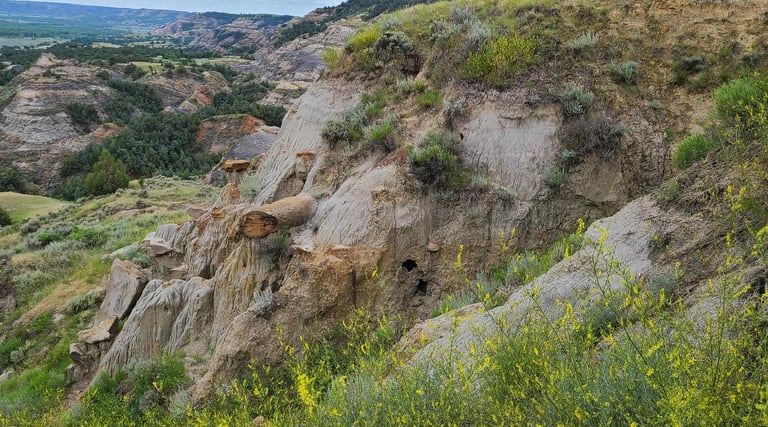

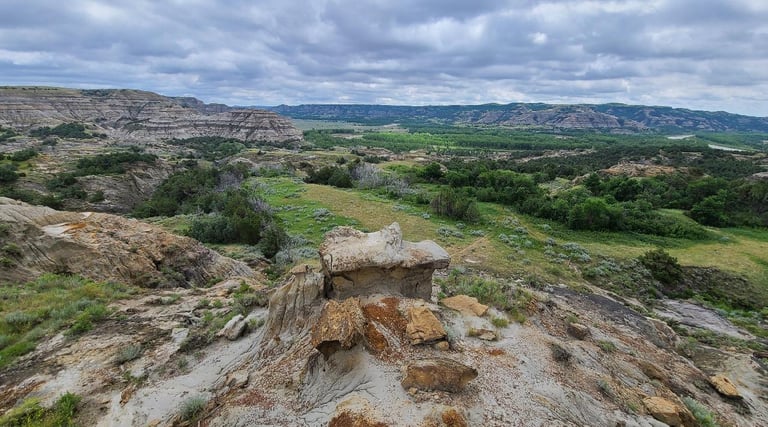

As we typically do, we drove to the far reaches and made our stops on the way out. From Oxbow Overlook, 14 miles from the entrance at the back of the park, you will see the meandering Missouri trying to change course yet again. I don’t think I’ve seen where a river comes so close back to itself. An oxbow is a cutoff pool of water that remains when a river eventually cuts through a meander, taking a shorter course. Someday, this will become one. Thousands of years ago, as the glacier melted, the Missouri had changed direction here as it used to flow toward the Hudson Bay, but as the erosive nature formed these Badlands, it changed the Continental Divide, causing the Missouri River upstream of this point to become part of the Mississippi River drainage. From this overlook, the scars from that event are evident in the slopes, crags, and flats. It’s very difficult to notice the lone Bison when there is so much going on in this rugged landscape. Wait a while at this overlook and you’re bound to see movement in all that camouflage.
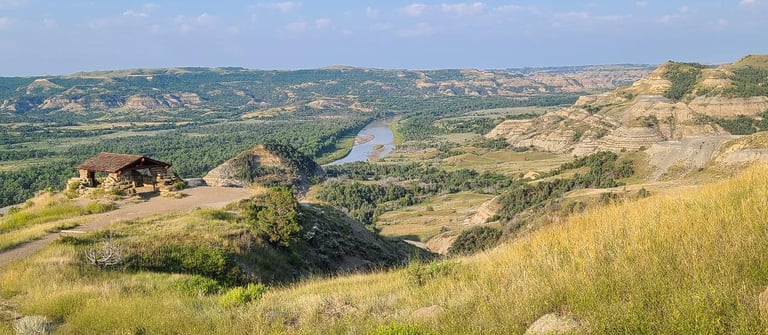

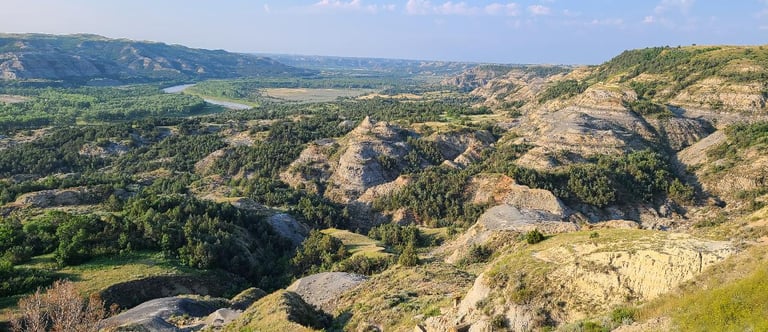

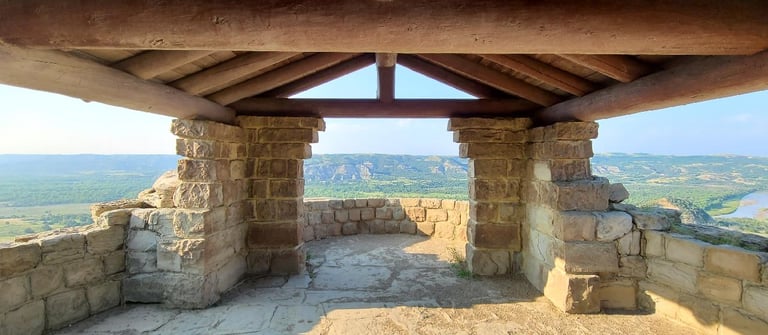

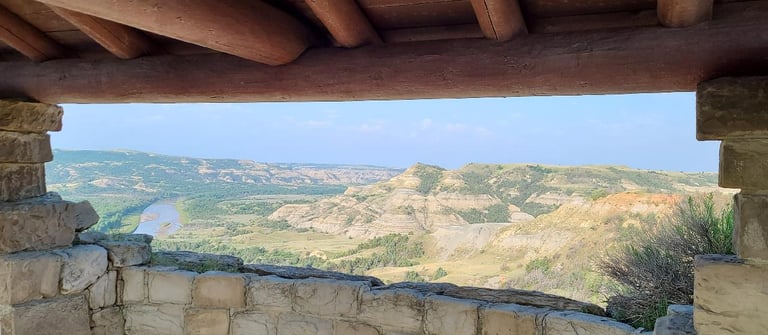

River Bend Overlook is a very short hike from the road, about 8 miles in from the entrance. A log shelter built by the CCC adorns the overlook. While it’s a popular spot for a picnic and a shady respite from the sun, it also means there’s a good chance many visitors will be in your shot. Fortunately, on this day, I had the patience to wait until the shirts of shocking pinks and greens strolled away to get 90 seconds of the view all to myself. Even for that short time, it was well worth the wait.
I greatly miss the days of film photography, where each click of the shutter mattered. Patience was necessary for that certain cloud to pass, to change the lighting on a specific subject within the composition, or a critter to move perfectly in frame. While it was cloudy that first day, we spent better than an hour at Oxbow getting many peeks of sun lighting up little areas. I think the experience was much better in reality than showed up in pictures. It’s not that the thought wasn’t there to take video, but as a blog may be considered a commercial entity, it requires and application & fee for a permit and the questionable approval time does not match up well with our unpredictable schedule. Therefore, we could capture it in video, but it would be unlawful for us to share it with you, not to mention that the weather and wildlife don’t exactly adhere to schedules.
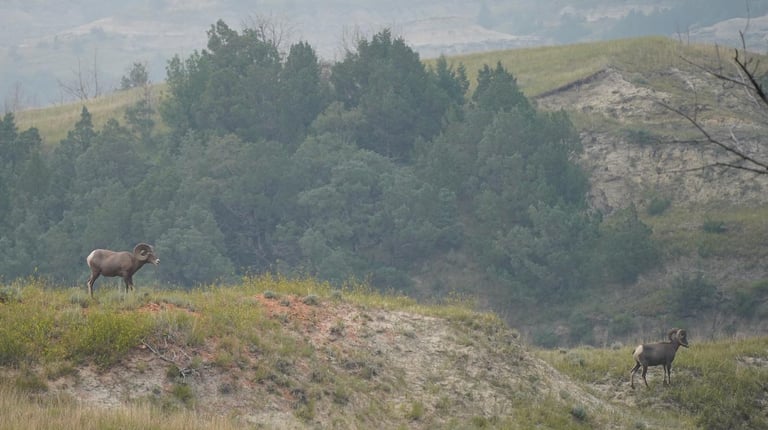

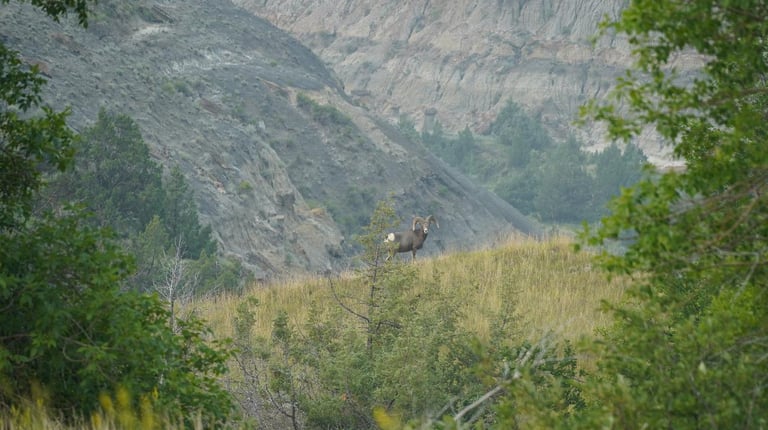

We didn’t hike any of the North Unit trails. We did drive all of the roads, checked out the campground, and browsed around each overlook. A Park Ranger advised us to get there early or late to see wildlife. We covered most daylight hours and can say there’s a much better chance before 8am to see Bighorn Sheep, and while Bison are plentiful during any hour, they migrate toward the lowland at dawn and seek shelter at twilight. We did not see a single Pronghorn or Elk.
If you go just after sunrise, very few people will be around, and you will see more than Bison, but will need a keen eye. We did see a family of turkeys making their way through the deeper grasses, and spotted a couple Bighorn Sheep blending in well with the rocky surroundings.
That particular morning, we stopped to help a couple experiencing vehicle problems in an empty parking lot. While we tried jumpstarting it for quite some time, it would crank but didn’t seem like it was getting enough fuel to start. They happened to have starting fluid, and that quick shot of ether through the intake got it up and running again. We escorted them to the area we saw the Bighorns, and luckily they were still there for us to share our findings with them. They were very greatful and offered me cash for the help, but I insisted that they keep the funds and pay it forward, to help another that may be stranded along the road or in the middle of nowhere.
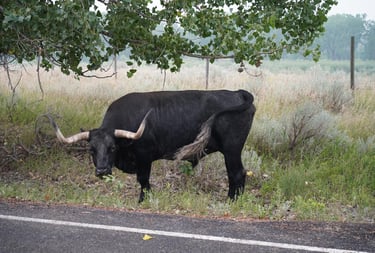

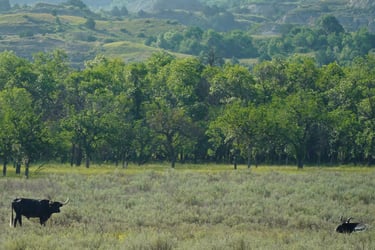

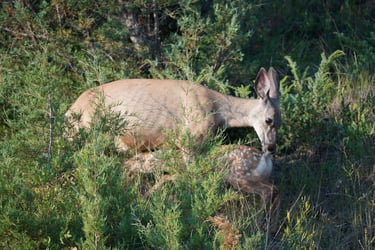

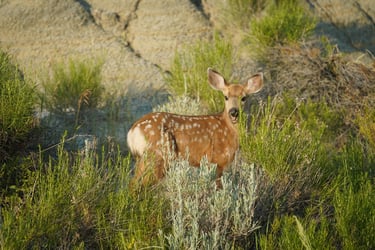

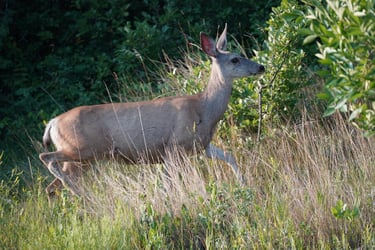

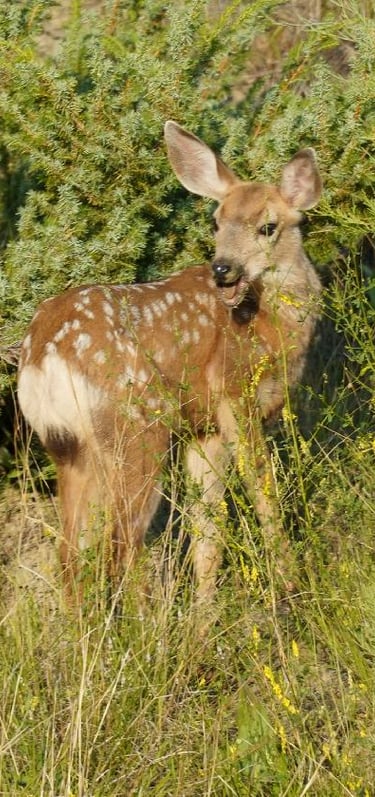

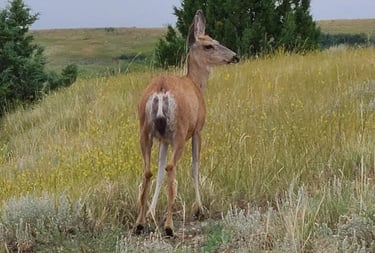

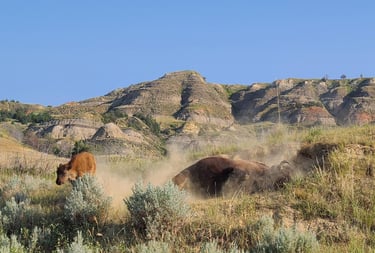

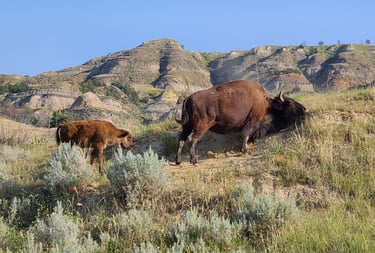

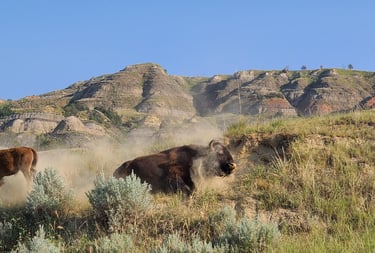

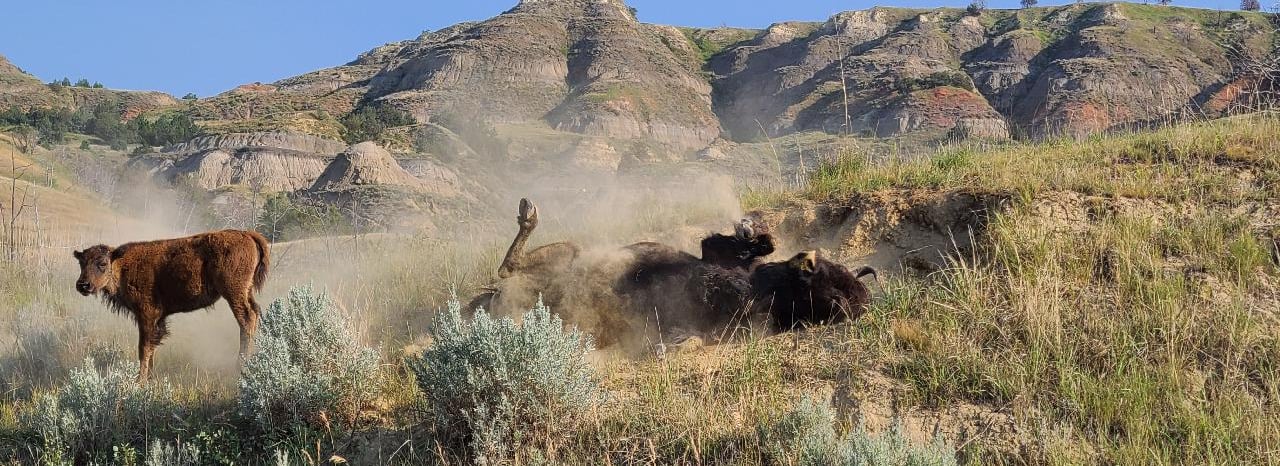

Juniper campground sits in the lower elevation about five miles from the highway. It has potable water and a dump station but no hookups or electricity at any of the 50 campsites, 9 of which are tent-only. Trees abound in this area, which may not have been well-suited for our solar energy renewal. We had no cellular or data reception in that area, and the $14/night fee for RV’s made us glad that we stayed at Summit for free.
Adjacent to the campground turnoff are the Cannonball Concretions, which were formed when water seeps into the limestone, reacting with other minerals, then hardening into a sphere. Little is known how and why they formed here. They vary in size, some are quite large. As the butte erodes, they become exposed then ultimately fall to the ground. I’m guessing that’s a pretty big thud.
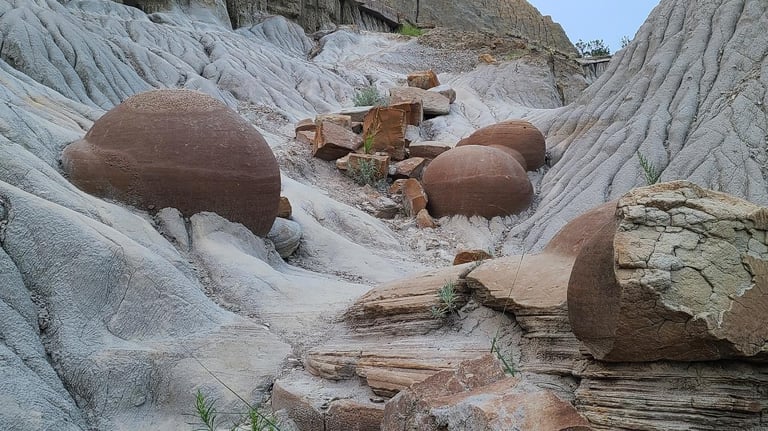

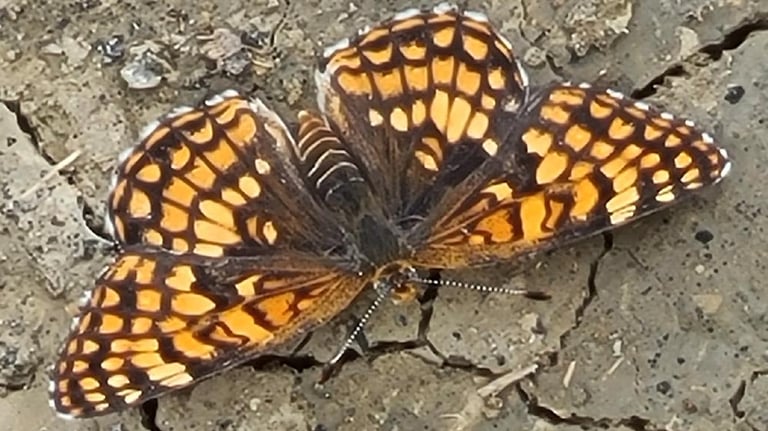

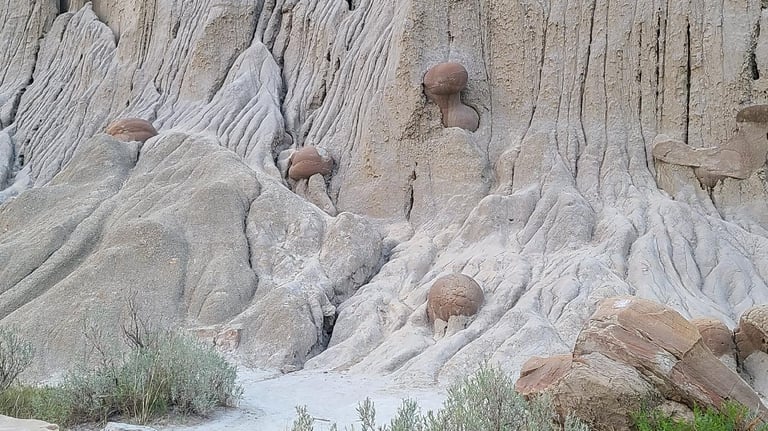

If I had the time, I could spend days here and not tire of the surroundings. While we did not make it to Elkhorn Ranch, the North Unit was our favorite of the three areas we visited.
Share your comments on Facebook or email us at roadfronts@gmail.com
Subscribe for monthly updates
Current location:
